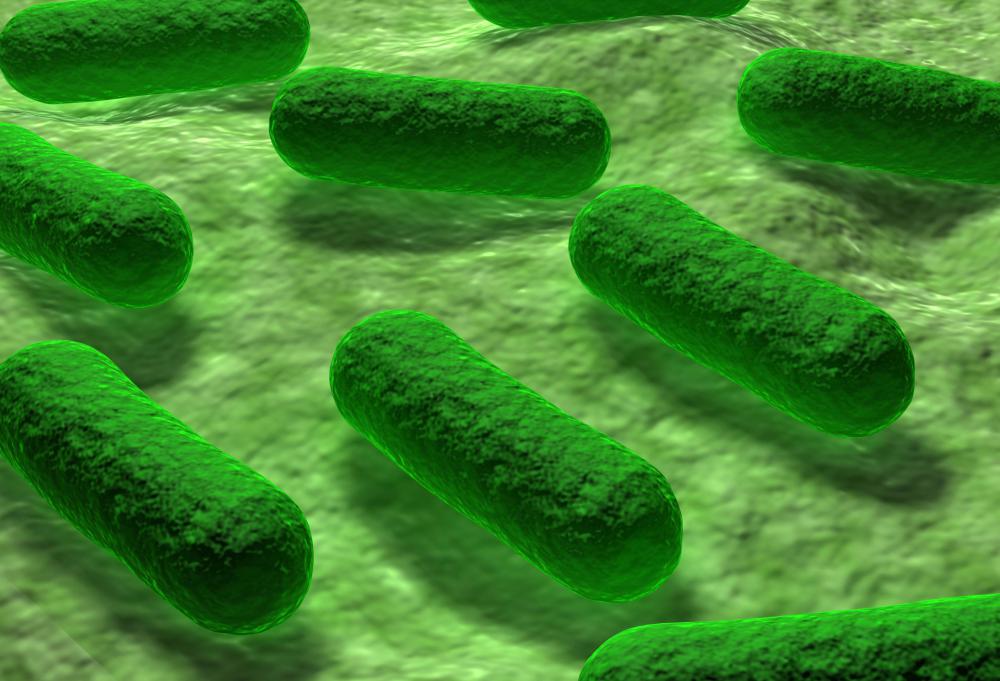At WiseGEEK, we're committed to delivering accurate, trustworthy information. Our expert-authored content is rigorously fact-checked and sourced from credible authorities. Discover how we uphold the highest standards in providing you with reliable knowledge.
What Is a Petechia?
A petechia is a small red spot, that looks like a pinprick on the skin, caused by bleeding just below the skin. The bleeding normally occurs due to a broken capillary blood vessel which, in most cases, will cause not only one petechia, but numerous, and is referred to as petechiae or purpura. It may be caused by a number of conditions, some of them serious.
In order to distinguish between reddening of the skin and a petechia, or petechiae, the skin should be pressed lightly with a finger. If the area does not lose its red color, it is a petechia, as opposed to reddening of the skin, which will go pale for a little while. Petechiae are generally smooth to the touch, as opposed to other rashes, which may caused raised spots or blisters. Bruising, or ecchymoses, is usually due to deeper bleeding under the skin's surface.

If a petechia appears, medical advice should be sought because some of the conditions which may cause them are potentially serious. The doctor will then do tests to determine the cause and treat it, where necessary. Petechiae may be due to less serious conditions, too. They may occur in people with fragile veins, especially the elderly, where it is referred to as Senile Purpura, in which case no treatment is required other than being careful and avoiding trauma.

Some serious conditions which may have petechiae as a symptom include idiopathic thrombocytopenic purpura (ITP), hemolytic uremic syndrome (HUS) and leukemia. Some medicines may also cause it as a side effect. ITP is a disorder which occurs when the platelet levels drop, which interferes with the normal clotting process in the body. The cause of ITP is not known and treatment may consist of corticosteroids and immunoglobulin, where necessary. Often ITP, particularly if it is mild, will resolve on its own, especially in children.

HUS is a condition where the red blood cells are destroyed prematurely and block the kidneys. It may lead to severe kidney dysfunction. Again, in many cases the cause is unknown, but it may result from severe or prolonged diarrheal diseases caused by E. coli. It may also be caused by some medications. Urgent diagnosis and treatment in hospital is required. Treatment may include fluid replacement, blood transfusions and dialysis.

Petechiae may also be caused by long-term treatment of drugs, such as corticosteroids. This is because they weaken the connective tissue. It is very important that any case of petechiae or rash is investigated urgently by a doctor to exclude any serious conditions.
AS FEATURED ON:
AS FEATURED ON:















Discussion Comments
Petechiae, angiomas, palpable purpuras etc. etc with myriad of benign, idiopathic and malignant causes. It is hell to be a doctor!
@feruze-- No, that's a type of mole called cherry angioma. You can look up pictures of petechiae and cherry angioma and compare them. Petechiae are not raised. The skin is flat but there is a dark red discoloration. Cherry angiomas on the other hand are raised and they tend to be a lighter red color.
I do have a few cherry angiomas but I stopped worrying about them after I developed petechiae due to Lyme disease. I don't know what causes a cherry angioma, but I think that petechiae are much more worrisome.
I get small red bumps on my skin when I'm under the sun a lot. Are these petechiae?
I didn't know that patechiae can form in large numbers and that they're linked with some diseases.
I get a petechia sometimes when I accidentally get my skin caught on something. I guess it causes bleeding and I will usually get one tiny petechia there. It disappears in a few days though.
Post your comments